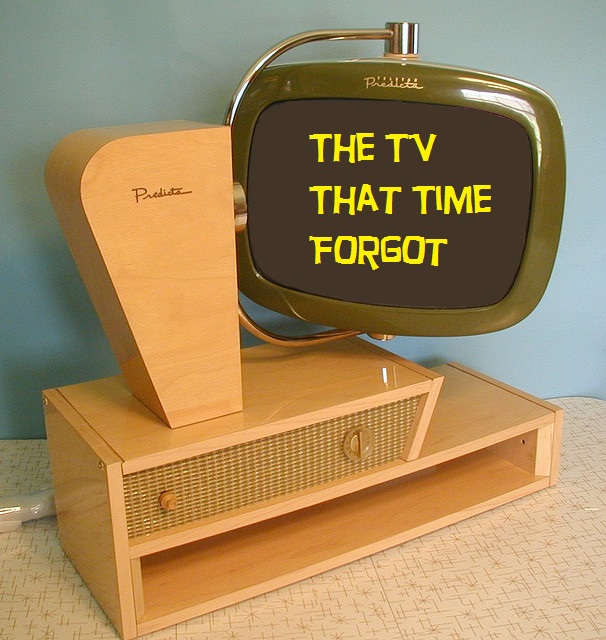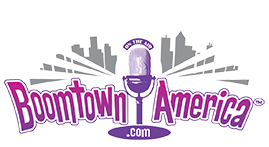 Back at the dawn of the TV era, most shows, and especially shows aimed at children, were Westerns. Heck, even Howdy Doody was supposedly about performers in a Wild West Show (Buffalo Bob, Chief Thunderthud, Princess Summerfallwinterspring, and Howdy himself decked out in a neckerchief, blue jeans, and cowboy boots).
Back at the dawn of the TV era, most shows, and especially shows aimed at children, were Westerns. Heck, even Howdy Doody was supposedly about performers in a Wild West Show (Buffalo Bob, Chief Thunderthud, Princess Summerfallwinterspring, and Howdy himself decked out in a neckerchief, blue jeans, and cowboy boots).
One of the earliest and most successful of these types of shows was My Friend Flicka, originally broadcast on CBS in 1956 in what was quaintly known then as the “family hour” (7:30 pm Eastern and 6:30 Central). As you can guess from the title, the show wasn’t based on the exploits of any gun-totin’ marshal or masked vigilante (and why did they call him the “Lone” Ranger when he was always hanging around with Tonto?). Nope, the hero of this TV show was a horse. Or should we say heroine as “flicka” is Swedish for “girl” and friend Flicka was indeed a girl horse.
Flicka started out as a 1941 novel, written by Mary O’Hara. In 1943, it was adapted into a couple of movies, starring Roddy McDowell. When television came along, My Friend Flicka was ready.
 Flicka lived on the Goose Bar Ranch in Wyoming at the turn of the last century (around 1900) and was best pals with the ranchers’ son, Ken McLaughlin. Why a Scottish rancher was giving his animals Swedish names was never addressed. Ken’s dad, Rob McLaughlin, was one of those earnest, struggling ranchers so popular in TV shows of the time. (Prosperous ranchers were almost always crooked, unless they were named Ben Cartwright.) Rob’s wife, Nell, was one of them thar plainspoken wives living a simple prairie life, yet still finding time (and the money) for full make-up and an always-perfect hairstyle. Most episodes revolved around homespun problems like wells drying up, stray dogs that needed adoption, or young neighbor kids with a fear of animals. The problems had to be simple because the McLaughlins usually waited for Flicka to solve them. (Hmm, lack of brain power may have been the reason the Goose Bar Ranch was always struggling.) The ranch also employed one grizzled coot, named Gus, as a helper. Gus had a Swedish accent that came and went depending on the scene. Maybe he’s the one who named Flicka.
Flicka lived on the Goose Bar Ranch in Wyoming at the turn of the last century (around 1900) and was best pals with the ranchers’ son, Ken McLaughlin. Why a Scottish rancher was giving his animals Swedish names was never addressed. Ken’s dad, Rob McLaughlin, was one of those earnest, struggling ranchers so popular in TV shows of the time. (Prosperous ranchers were almost always crooked, unless they were named Ben Cartwright.) Rob’s wife, Nell, was one of them thar plainspoken wives living a simple prairie life, yet still finding time (and the money) for full make-up and an always-perfect hairstyle. Most episodes revolved around homespun problems like wells drying up, stray dogs that needed adoption, or young neighbor kids with a fear of animals. The problems had to be simple because the McLaughlins usually waited for Flicka to solve them. (Hmm, lack of brain power may have been the reason the Goose Bar Ranch was always struggling.) The ranch also employed one grizzled coot, named Gus, as a helper. Gus had a Swedish accent that came and went depending on the scene. Maybe he’s the one who named Flicka.
 Anyway, the cast featured Johnny Westbrook as Ken, Gene Evans as Rob, Anita Louise as Nell, and veteran character actor Frank Ferguson as Gus. It was one of the first television series produced by Twentieth Century Fox. Fox actually put more money into the series than was average. For starters, they filmed the show in color (which helped keep it in syndication well into the 1960s), shot extensively in outdoor locations rather than sound stages, and used higher production values than most of the other shows being produced in 1956.
Anyway, the cast featured Johnny Westbrook as Ken, Gene Evans as Rob, Anita Louise as Nell, and veteran character actor Frank Ferguson as Gus. It was one of the first television series produced by Twentieth Century Fox. Fox actually put more money into the series than was average. For starters, they filmed the show in color (which helped keep it in syndication well into the 1960s), shot extensively in outdoor locations rather than sound stages, and used higher production values than most of the other shows being produced in 1956.

The cost of each episode is one reason why My Friend Flicka stayed in production for just one season, producing 39 episodes. But the high quality of the production kept the show running on all three major networks for a decade. From 1956 to 1957, it ran in black and white on CBS. Then, it transferred to NBC with the 39 episodes running in color on that network from 1957 to 1958. From 1959 to 1960, ABC ran My Friend Flicka as an afternoon show. Flicka galloped back to CBS during the 1961-62 season, returning to ABC in the fall of 1962 through December of 1963. It ended its network run at CBS from September of 1964 through September 1966. A very impressive run for just 39 episodes.
 It's always puzzled us that this show and one of the other long-running shows starring a horse, Fury, featured a young boy as the horse’s sidekick when the kids most into horses rather than the cowpokes who rode them tended to be girls. Only National Velvet in the 60’s seemed to understand that.
It's always puzzled us that this show and one of the other long-running shows starring a horse, Fury, featured a young boy as the horse’s sidekick when the kids most into horses rather than the cowpokes who rode them tended to be girls. Only National Velvet in the 60’s seemed to understand that.
Regardless, My Friend Flicka enjoyed a successful run in syndication after its network outings before finally being put out to pasture. All 39 episodes are available on home video, and there is an entire website dedicated to the show at MyFriendFlicka.com.


